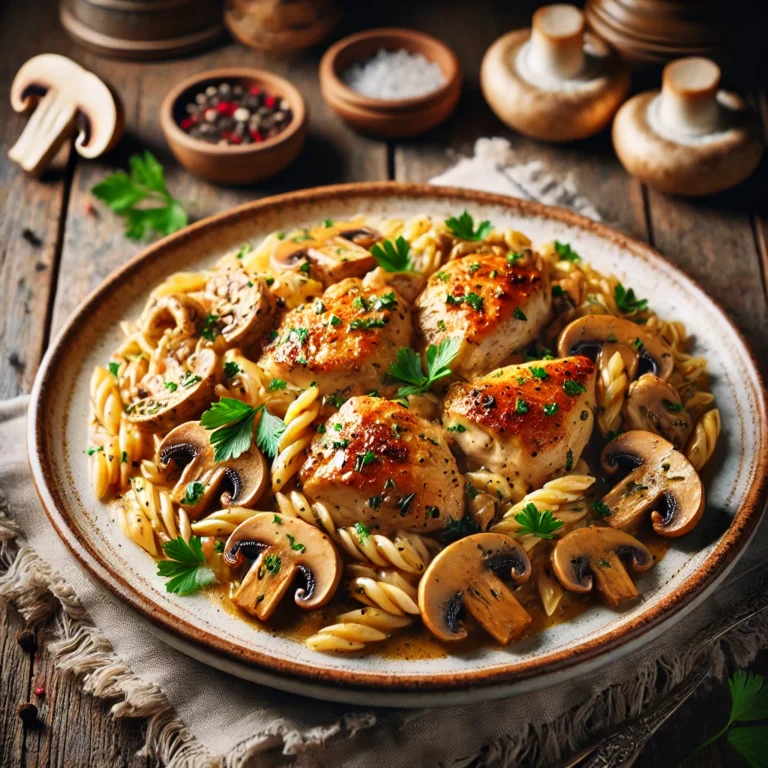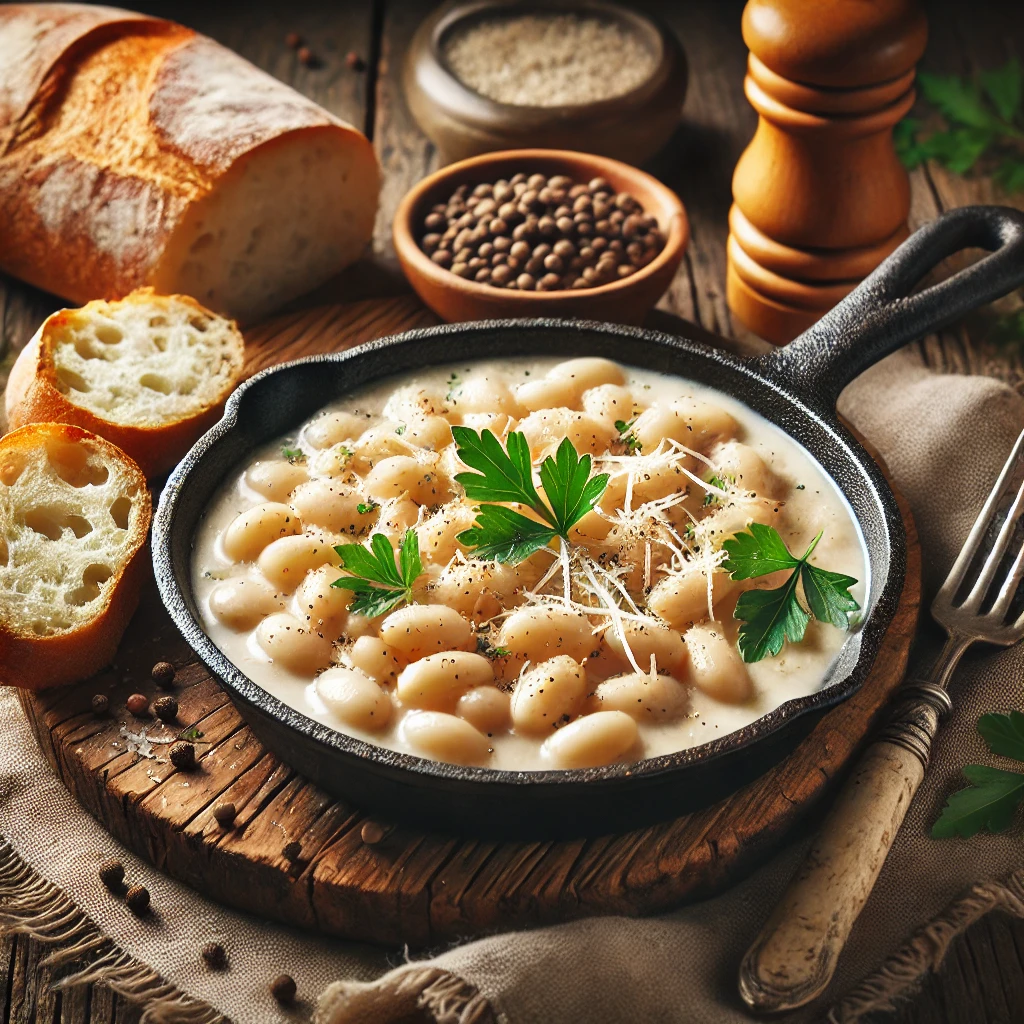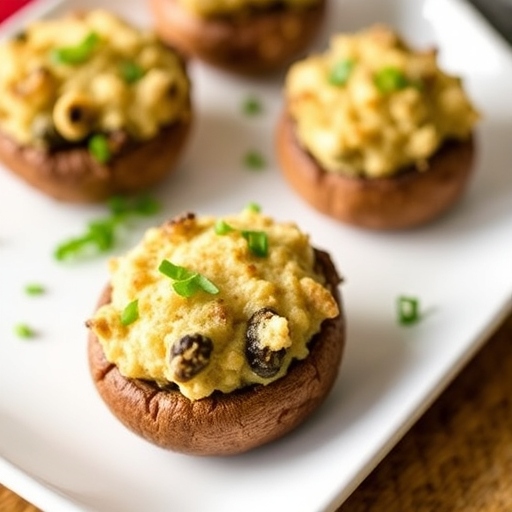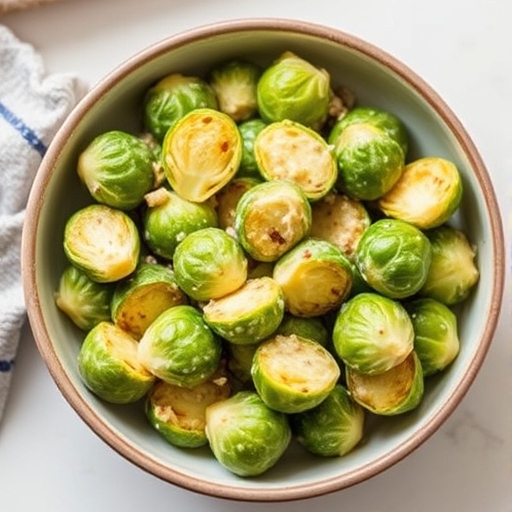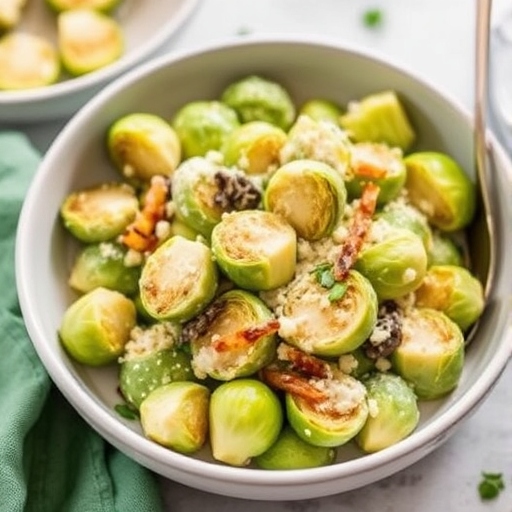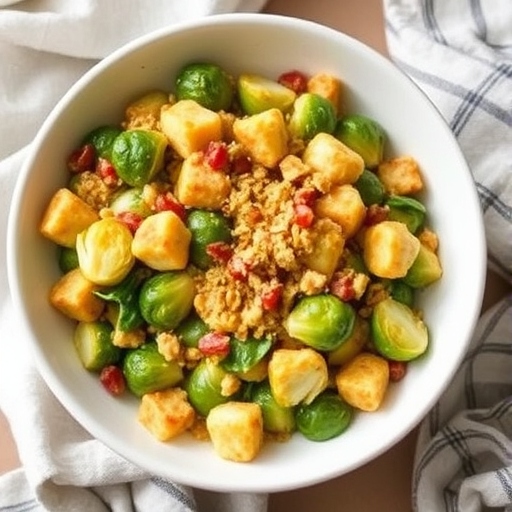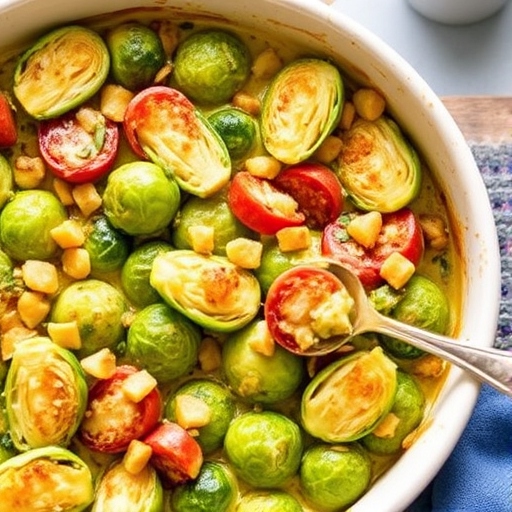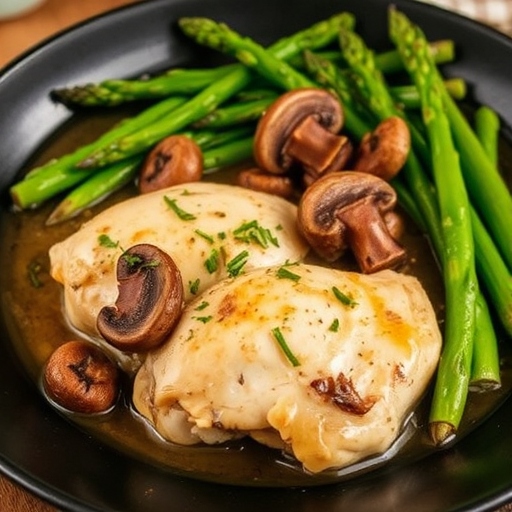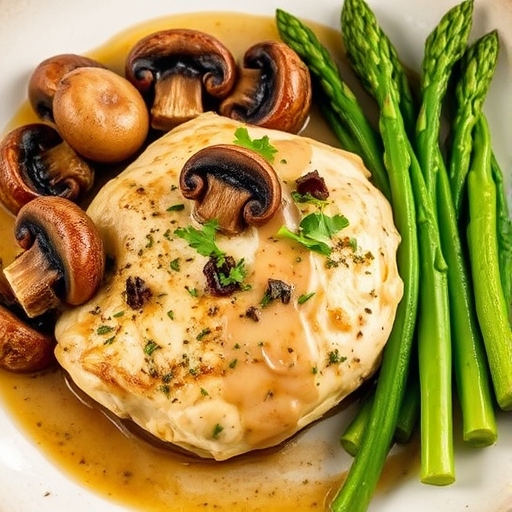Introduction
Chicken Marsala Orzo is a delightful fusion of Italian-American cuisine that combines the rich, savory flavors of a classic Marsala sauce with the comforting creaminess of orzo pasta. This one-pan dish is perfect for busy weeknights yet elegant enough to serve at a dinner party.
Tender chicken, caramelized mushrooms, and silky Marsala wine sauce come together with al dente orzo, creating a meal that feels both indulgent and wholesome. It’s a dish that balances tradition and creativity, offering something for everyone to love.
Table of Contents
1. The Story Behind Chicken Marsala Orzo
Chicken Marsala originated in Sicily, the home of Marsala wine. This fortified wine adds depth and complexity to dishes, making it a staple in Italian cooking. Traditionally paired with veal, the recipe has evolved to feature chicken, a more accessible protein.
The addition of orzo—a short, rice-shaped pasta—brings a modern twist to the dish. Unlike traditional Chicken Marsala served with mashed potatoes or linguine, this recipe allows the orzo to absorb the rich sauce, creating a cohesive and flavorful meal.
The idea for this one-pan wonder came from the desire to simplify the traditional recipe without sacrificing its essence. The result? A dish that feels gourmet but is easy enough to whip up after a long day.
2. The Benefits of Making Your Own Chicken Marsala Orzo
Cooking this dish at home offers several advantages:
1. Customization
Adjust the seasoning, mushroom variety, or even the type of Marsala wine to suit your taste.
2. Control Over Ingredients
Choose high-quality, fresh ingredients, ensuring no artificial additives or preservatives.
3. Cost Savings
Restaurant-quality Chicken Marsala can be pricey. Making it at home delivers the same flavors at a fraction of the cost.
4. Comfort Food with a Twist
This recipe blends the familiarity of Chicken Marsala with the cozy texture of orzo, making it a perfect meal for any occasion.
3. Essential Ingredients for the Perfect Chicken Marsala Orzo
For the Chicken:
- Chicken Breasts or Thighs (2 lbs): Boneless and skinless for easy cooking.
- Flour (1/4 cup): For dredging, helps the chicken brown beautifully.
- Salt and Pepper (to taste): Essential for seasoning.
For the Marsala Sauce:
- Olive Oil (2 tbsp): Adds a fruity richness to the dish.
- Butter (2 tbsp): Enhances the sauce’s silky texture.
- Garlic (3 cloves, minced): Adds aromatic depth.
- Shallots (2, finely chopped): Provides a mild onion flavor.
- Mushrooms (2 cups, sliced): Cremini or button mushrooms work well.
- Marsala Wine (1 cup): Use sweet or dry depending on your preference.
- Chicken Stock (2 cups): Balances the wine and adds depth.
- Heavy Cream (1/2 cup): For a luxurious finish.
For the Orzo:
- Orzo Pasta (1 cup): Acts as the starchy base, soaking up all the flavors.
- Parmesan Cheese (1/4 cup, grated): Adds a nutty, umami kick.
- Fresh Parsley (2 tbsp, chopped): For garnish and a fresh, herby touch.
4. Cultural History of Ingredients
- Marsala Wine: Originating in Sicily, Marsala is a fortified wine with a rich history dating back to the 18th century. It was initially produced for British traders and has since become a culinary treasure.
- Orzo: This versatile pasta has roots in Italian and Greek cuisines, often used in soups and casseroles. Its name means “barley” in Italian due to its resemblance to the grain.
- Mushrooms: Widely used in European cooking, mushrooms add earthiness and umami, making them a natural pairing with Marsala wine.
5. Equipment You’ll Need
- Large Skillet: Preferably non-stick or cast iron for even cooking.
- Tongs: For flipping the chicken.
- Wooden Spoon: Perfect for stirring the sauce without scratching your pan.
- Microplane: Ideal for grating Parmesan cheese.
- Sharp Knife and Cutting Board: For prepping chicken, mushrooms, and herbs.
6. Step-by-Step Instructions
Step 1: Prep the Chicken
- Pat the chicken dry with paper towels and season both sides with salt and pepper.
- Lightly dredge each piece in flour, shaking off excess.
Step 2: Sear the Chicken
- Heat olive oil and 1 tablespoon of butter in a large skillet over medium heat.
- Add the chicken and sear until golden brown on each side, about 4 minutes per side. Remove from the skillet and set aside.
Step 3: Sauté the Vegetables
- In the same skillet, melt the remaining butter.
- Add shallots and garlic, cooking until fragrant.
- Stir in the mushrooms, cooking until they release their moisture and become golden brown.
Step 4: Build the Sauce
- Deglaze the pan with Marsala wine, scraping up any browned bits.
- Add chicken stock and bring to a simmer.
Step 5: Cook the Orzo
- Stir the orzo into the sauce and reduce the heat to low.
- Return the chicken to the skillet, covering with the sauce.
- Cover the pan and let everything simmer until the orzo is tender and the chicken is fully cooked, about 10–12 minutes.
Step 6: Finish with Cream and Parmesan
- Stir in heavy cream and Parmesan cheese.
- Garnish with fresh parsley before serving.
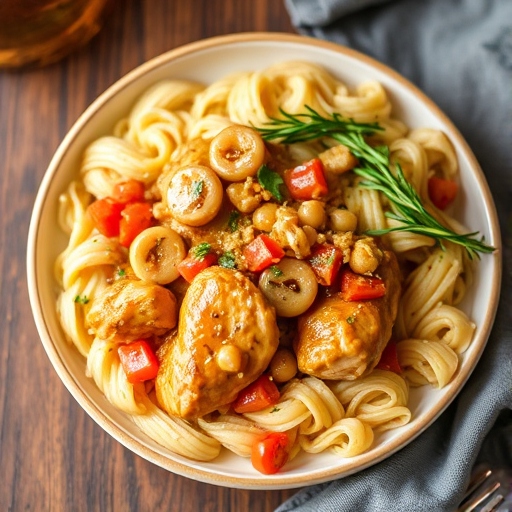
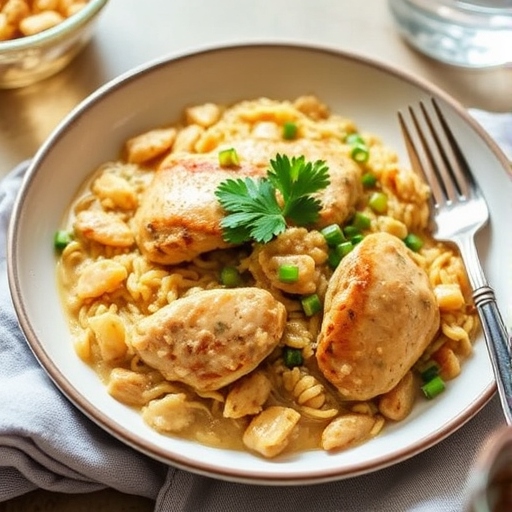
7. Suggestions for Serving and Storing
Serving Suggestions
- Serve hot with a side of crusty bread to soak up the sauce.
- Pair with a fresh green salad drizzled with lemon vinaigrette for a refreshing contrast.
- For a more indulgent meal, serve alongside roasted vegetables like asparagus or carrots.
Storing Tips
- Refrigerate: Transfer leftovers to an airtight container and refrigerate for up to 3 days. Reheat gently on the stovetop with a splash of chicken stock or water to prevent the orzo from drying out.
- Freeze: This dish can be frozen for up to a month. Let it cool completely, then store in freezer-safe containers. Defrost in the fridge overnight and reheat as needed.
8. Chef Simon’s Tips for Chicken Marsala Orzo
- Choose High-Quality Marsala Wine: This is the star ingredient, so don’t skimp. Avoid cooking wines and opt for a bottle you’d enjoy sipping.
- Don’t Rush the Mushrooms: Allow them to caramelize fully for maximum flavor.
- Balance Sweetness and Acidity: If the Marsala wine is too sweet for your taste, add a squeeze of lemon juice or a splash of white wine vinegar.
9. Emotional and Psychological Impact of Food
Chicken Marsala Orzo is comfort food at its finest. The creamy orzo and savory sauce evoke feelings of warmth and contentment, making it an ideal dish for unwinding after a long day. Sharing this meal with loved ones can enhance its emotional impact, creating memories tied to its irresistible flavors.
10. Mindful Cooking Techniques
Cooking Chicken Marsala Orzo mindfully enhances the experience:
- Focus on each step, from slicing mushrooms to stirring the sauce, as a way to connect with the process.
- Appreciate the transformation of simple ingredients into a rich, flavorful dish.
- Savor the aromas as the Marsala wine hits the hot pan and infuses the kitchen with its signature scent.
11. Tips for Keeping the Dish Fresh Longer
- Store leftovers in smaller portions to minimize reheating times and retain the orzo’s texture.
- When reheating, add a splash of chicken stock or cream to revive the sauce.
- Avoid leaving the dish out at room temperature for extended periods to prevent spoilage.
12. Advanced Culinary Terms and Techniques
- Deglazing: Scraping up browned bits from the pan after searing, using a liquid like Marsala wine. This adds depth and flavor to the sauce.
- Reduction: Simmering the sauce to concentrate its flavors by evaporating excess liquid.
13. Healthy Ingredient Alternatives
- Low-Fat Cream: Swap heavy cream for half-and-half or a plain Greek yogurt for a lighter version.
- Whole-Grain Orzo: Use whole-wheat orzo to increase fiber content.
- Vegetable Stock: Replace chicken stock for a vegetarian twist when using mushrooms as the main protein.
14. More Serving Ideas
- Serve with a drizzle of truffle oil for a gourmet touch.
- Top with toasted pine nuts for added texture and flavor.
- Sprinkle extra Parmesan and fresh basil for a more herbaceous finish.
15. Common Issues and Solutions
Problem: Sauce is Too Thin
- Solution: Let it simmer uncovered for a few extra minutes or stir in a cornstarch slurry.
Problem: Orzo is Overcooked
- Solution: Cook it separately, then stir it into the sauce right before serving.
16. Variations to Try
- Vegetarian Version: Replace chicken with portobello mushrooms or tofu.
- Seafood Twist: Use shrimp or scallops instead of chicken for a luxurious option.
- Spicy Kick: Add crushed red pepper flakes or a pinch of cayenne for heat.
17. Nutritional Information and Health Benefits
This recipe balances indulgence with nutritional value:
- Chicken: High in protein, supporting muscle health.
- Mushrooms: A great source of antioxidants and B vitamins.
- Orzo: Provides carbohydrates for energy, especially when made from whole grains.
18. The Art of Pairing
Pair Chicken Marsala Orzo with:
- Wine: A glass of Marsala or Chardonnay complements the dish beautifully.
- Dessert: Follow with a light tiramisu or panna cotta for a complete Italian-inspired meal.
19. Weather and Recipe Outcome
Cooler weather enhances the appeal of this warm, creamy dish, making it a favorite for fall and winter evenings. In warmer months, serve with a chilled side salad to keep it light and refreshing.
20. Other Italian-Inspired Recipes to Explore
- Creamy Pesto Gnocchi
- Spinach and Ricotta Stuffed Shells
- Classic Bolognese Sauce with Tagliatelle
21. Focus on Tools and Equipment
- Cast Iron Skillet: Retains heat well, ensuring even cooking.
- Fine Mesh Strainer: Useful for rinsing orzo or sifting flour.
- Digital Thermometer: Helps ensure the chicken reaches a safe internal temperature of 165°F (74°C).
22. Frequently Asked Questions
Q: Can I use a different type of pasta?
Yes, small pasta like ditalini or acini di pepe works well, but adjust cooking times accordingly.
Q: What if I don’t have Marsala wine?
Substitute with sherry, Madeira, or a mix of white wine and a splash of brandy.
Q: Can I make this dish dairy-free?
Yes, use coconut cream or cashew cream in place of heavy cream and skip the Parmesan.
Conclusion
Chicken Marsala Orzo is the perfect blend of tradition and innovation. With its creamy orzo base, tender chicken, and rich, wine-infused sauce, this dish is sure to become a favorite in your household.
Whether you’re impressing dinner guests or simply treating yourself, this recipe guarantees satisfaction. Gather your ingredients, fire up the skillet, and get ready to savor every delicious bite. Bon appétit !

